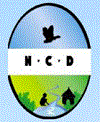Country/territory: Senegal
IBA criteria met: A1, A4i, A4ii (2001)
For more information about IBA criteria, please click here
Area: 3,800 hectares (38.00 km2)
Nature - Communautés - Développement

Site description (2001 baseline)
This marine site consists of the coastline of the peninsula known as Cap Vert, running from les Mammelles and Pointe des Almadies north to Cambérène (c.19 km in length), together with the offshore islands and reefs and the narrow strip of sea between the islands and the mainland (up to about 2 km offshore). Cap Vert is the westernmost point of Africa and is the peninsula on which Dakar stands. The two islands in question are the Ile de Yof (also known as Ile de Tenguène) and the Ile de Ngor. The coast and islands consist of rocky outcrops and some sandy beaches, and there is a string of reefs off the Pointe des Almadies, known as the ‘Chaussée des Almadies’. The reefs and islands form a degree of natural protection from the Atlantic Ocean for the narrow sea channel (less than 1 km) between them and the mainland. Many migrating seabirds pass through this marine ‘bottleneck’, and large numbers also pass on the seaward side of the two islands.
Key biodiversity
See Box for key species. Larus audouinii is frequent to common off the Pointe des Almadies during January to March—numbers in the hundreds have been recorded flying south in October (counts of 132 in 1995 and 280 in 1996, each count consisting of several hours observation over several days, with a maximum single-day total of 77 on 10 October 1996).
The site is of considerable importance for sea- and waterbirds, particularly as a migration route along which move very large numbers of spring- (northward) and autumn- (southward) passage shearwaters, petrels, skuas, gulls and terns. Resident terns also use the site, perching on rocks all along the coast and foraging behind fishing boats at sea. Data on numbers of species are from seawatching counts made by a number of observers, particularly since 1990 (see Marr
et al. 1998 for references and sources). Most of the observations were made either from the mainland (Pointe des Almadies) or from Ile de Ngor, together with a few pelagic counts made by observers from boats within 25 km of the shore. This means that the numbers listed in the Box are a mixture of birds moving overland or through the narrow sea channel between the islands and the mainland, and also some further out to sea (and not strictly within the IBA as defined here). However, since counts consist of only a few hours watching per day, over a period of days, they presumably represent considerable underestimates of the total numbers of birds passing through the site; no comprehensive count covering a whole season of passage has been undertaken.
Particularly significant numbers of terns and shearwaters have been recorded (see Box). For
Sterna sandvicensis, 13,000 individuals have been recorded wintering along the coast from Kayar to Cap Vert (this area includes parts of two other IBAs—sites SN009 and SN010—but it seems safe to assume that a number in excess of the threshold for this species occur within the Cap Vert IBA boundary). There is also a passage count for
S. sandvicensis of 1,206 birds during 48 hours observation over a period of eight days in October/November 1997. For
Chlidonias niger, a total of 23,923 birds were observed during 78 hours of observation over 11 days in October 1996, with a single day maximum total of 12,645 on 12 October. Other species on passage include
S. maxima (421 over a period of eight days in April 1992) and
S. hirundo (1,580 over a period of eight days in April 1992 and 6,454 over a period of eight days in October/November 1997); these numbers are also close to IBA thresholds for these species. For
Calonectris diomedea, 4,585 individuals were counted during a total of 64 hours observation over eight days during October and November 1997.
Non-bird biodiversity: The dolphin Tursiops truncatus (DD) is regularly seen, and it is likely that other dolphins, including Steno bredanensis (DD) and Stenella coeruleoalba (LR/cd), and the sea-turtle Caretta caretta (EN), recorded from the Parc National des Iles de la Madeleine (site SN010), will also be present in this site.
Recommended citation
BirdLife International (2024) Important Bird Area factsheet: Cap Vert (Senegal). Downloaded from
https://datazone.birdlife.org/site/factsheet/cap-vert-iba-senegal on 24/12/2024.